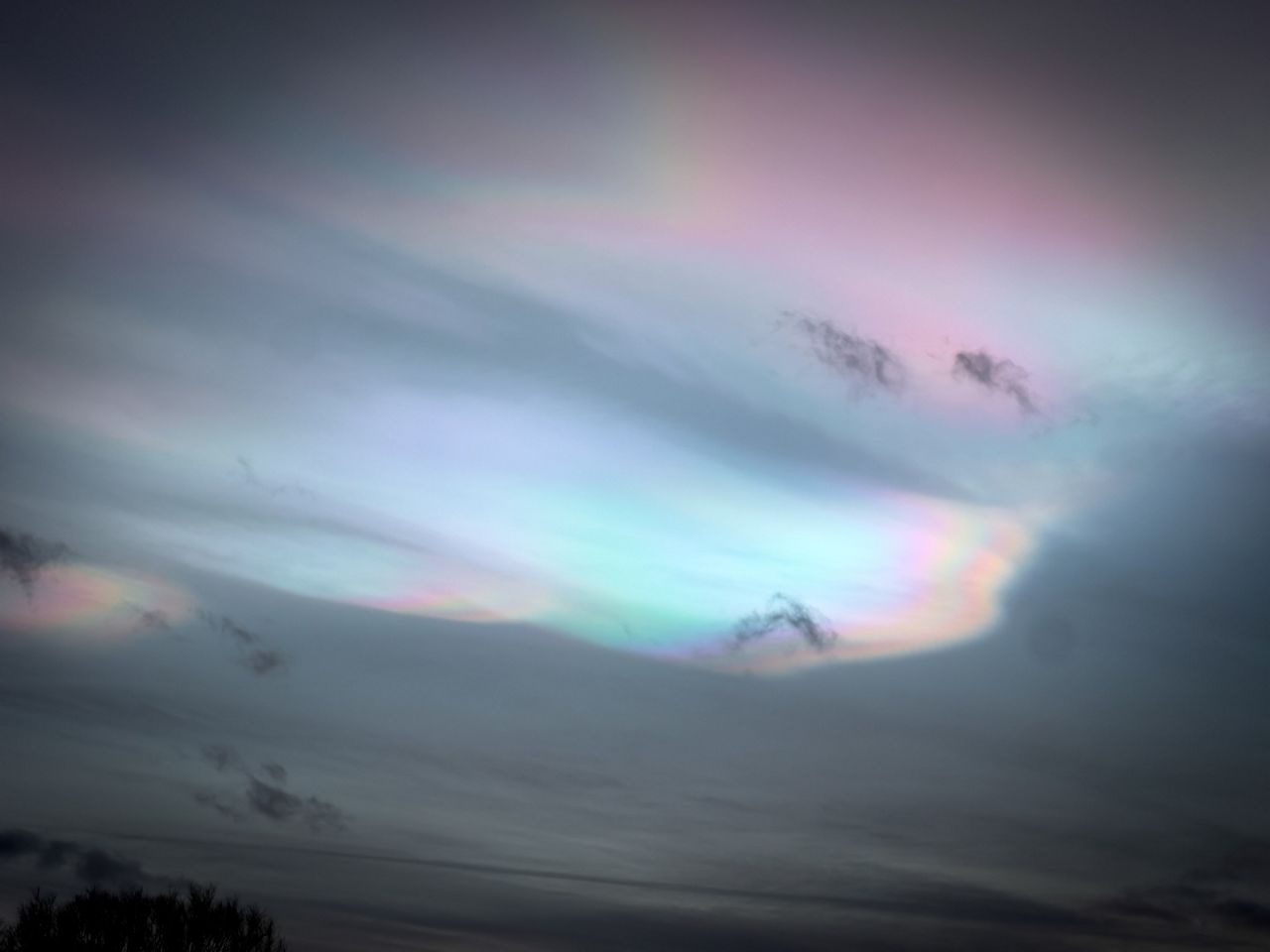Clouds come in many shapes and forms, but did you know there are rainbow clouds?
According to NOAA, “a rainbow cloud can occur because of something called cloud iridescence.”
You’ll see this dazzling phenomena in altocumulus, cirrocumulus, lenticular and cirrus clouds.
These rainbow clouds, or as they’re scientifically known, ‘nacreous clouds’, form when small ice crystal scatter the sun’s light. Once the light hits the droplets, it creates a vibrant hue of colors.
Check out this video of rainbow clouds see above Aylesford, United Kingdom in late December.
Cloud iridescence is a rare phenomenon. Clouds need to be thin and have a lot of water droplets that are about the same size.
Iridescence is a combination of high-altitude clouds, the uniform distribution of ice crystals, sunlight and a sun that is high in the sky.
(Photo by: CameraLeon/WEATHER TRAKER/TMX)
Nacreous clouds are rare sites to see. According to the World Meteorological Organization, you can see these dazzling sites in Alaska, Canada and parts of Scandinavia and the Arctic.
Plus, the clouds form in colder climates because the ice crystals in the clouds need to be chilled to freezing or below.
Whenever you see rainbow or nacreous clouds, enjoy these color clouds and experiences.
Our team of meteorologists dives deep into the science of weather and breaks down timely weather data and information. To view more weather and climate stories, check out our weather blogs section.

